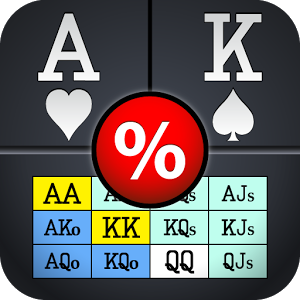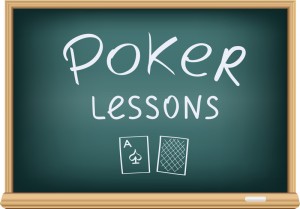 Beware the Short Stack
Beware the Short Stack
Much has been written on the impact of stack size in no-limit hold’em, including how to play both with and against a short stack. Little however has been written on how to play a short stack in limit hold’em cash games. Of course, that is because you should never allow yourself to get short-staked in a limit cash game. But just because you are sensible enough to know this, that doesn’t mean that all your opponents are too. Knowing how to play against a short stack in limit hold’em is an important skill that is often overlooked in poker literature.
A good player should always reload when their stack drops below 12 big bets, which is the maximum you can spend in a hand if every street is capped (assuming a four bet cap). Reloading when you drop below this will prevent the nightmare scenario where you hold the nuts against a player with a strong, second-best hand, but run out of money before you can extract maximum value. Obviously the smaller the stack the more this could cost you, so while starting a hand with 10 big bets is forgivable sitting with a stack of 6 big bets or less certainly isn’t. Hence it is reasonable to theorise that someone nursing a short stack is more than likely a bad player and the smaller their stack is, the more confident you can be of this.
This theory tends to hold up in practice too. In the hundreds of thousands of hands I have played, I have encountered dozens of short-stacked players and probably 90% of them were poor. The difficult part is that a short-stacked player might play very differently to how they play when they have some chips in front of them. Generally speaking they will just want to get their chips in the middle and either double up or bust out and move on. As a result a tight player might become loose, a passive player might become aggressive and a loose player may get even looser.
Adjusting your Play
There are two reasons that you will need to significantly adjust your strategy when playing against a short-stacked player. Firstly you will need to compensate for their loose and aggressive tendencies as described above. Secondly you may need to adjust for the fact that there is an all-in player in the pot. Some decisions become more complex when there is a player involved who cannot fold or bet, especially in multi-way pots. On the other hand, some decisions become significantly easier.
Some of the specific adjustments you will need to make are described below.
Don’t try to fold them out
Remember that a short-stacked player usually wants to get his chips in the middle at the earliest opportunity. They are not going to fold if there is any chance at all that they can win the hand, especially if they have already committed chips to the pot. They may even be correct to call with a very weak hand, because they get to see all remaining cards for a very low price. So with this in mind don’t make moves on a player that is almost all-in, because they will call you with hands that would never call a bet under normal circumstances. If you are going to bet, bet for value.
Don’t respect their bets and raises
Likewise when a short-stack bets or raises it means practically nothing. Often a short stack will hit a point where he decides that he is going to commit all his remaining chips on this hand. At this point he will bet and raise almost regardless of his cards. From their point of view this gives them the best chance of winning the pot as they might persuade some or all of their opponents to fold. Of course you should not fall for this ruse. When a short stack with only one or two big bets left bets into you, it means nothing. Call or raise him back very liberally and if there is a third player in the hand consider a re-raise to isolate.
Adjust your pot odds for multiple cards
Remember that if a player is all-in then they can’t make you pay any more on future streets. This can make a big difference to your pot odds when chasing marginal draws or holding a weak hand, because you will often get to see multiple cards for the price of one (or even less than the price of one if they are forced to make an undersized bet). For example a player open raises from middle position and it is folded around to you in the big blind. Should you call? Of course usually that would depends on what cards you have and what you knew about the player. But what if the raiser was a short-stack who now only had about half a small bet left in his stack? Now it doesn’t matter what you have, you should call (or raise him all in) regardless. You are getting more than 3:1 odds and he can’t make you pay to chase on later streets. Even if you hold 72o you have the odds to call as you are only in bad shape against AA-77.
Don’t rely on implied odds
The other side of the coin is that while you may get better pot odds for your calls pre-flop and on the flop, you have no implied odds against an all-in player. Implied odds measure money you can expect to win on later streets and you can’t win what they don’t have. Even if there are other players in your pot your implied odds may be vastly diminished. Once a player is all-in, the other players in the pot are less likely to bet and raise heavily as they have no folding equity on the main pot.
Revisit slowplaying
There are plenty of risks to slowplaying in limit hold’em. You might give your opponents free cards to beat you. You might miss out on a lot of bets when they have a strong second best hand. They might not be trapped into betting on later streets. However, when up against a short stack the conditions suddenly become quite favourable for a well-timed slowplay. They are looking for an opportunity to get all their chips in so if you show weakness, they are likely to bet regardless of their cards. Even if they don’t, it doesn’t matter if you ‘miss bets’ on the flop, because they only have the chips for a few bets anyway.
Consider side pot implications
If a player ends up all-in in a multi-way pot this results in the creation of a side pot. A lot of limit players are bad at playing with side pots because they are not used to them. You could probably write a whole article on playing side-pots, but for the sake of brevity here are the key points:
– Only consider a bluff if your hand has some showdown value against the all-in player or the side pot on its own is worth bluffing at (hint: it usually isn’t)
– As a result of the above, you should be more willing to fold marginal hands to river bets providing you feel your opponent is smart enough not to bluff at a dry side pot.
– Value bet hard if you feel you are ahead after a player is all-in. Remember you only have to beat the other players in the side pot to win these additional bets, but they are calling hoping to win the main pot too.
Conclusion
There is nothing particularly difficult about playing against short stacks. What you must do however is switch the autopilot off for a moment and concentrate on the situation at hand. I will confess that in the past I have played hands very badly because I have not noticed that a player is short-stacked. This is because I wasn’t concentrating as well as I should and I learned my lesson. If you only notice your opponent is short stacked when they make a bet of $7.43 on the turn, think about whether you are paying as much attention to the game as you should be.
One final note on short-stacks, they will put a lot of bad beats on you. They will re-raise you all-in pre-flop with J7o and suck out on your KK because they got to see five. There is no point in getting angry about this, they are just using a legitimate game mechanism and got lucky. It’s all money in your pocket in the long run. Say ‘nice hand’ and hope they make that re-raise again in the future. And hope that when they inevitably go bust in ten hands time they rebuy.
Good luck at the tables
Ian Taylor, AKA “Piemaster is the Co-Author of the highly regarded Poker Psychology Book “The Poker Mindset”.
Submit your review | |











